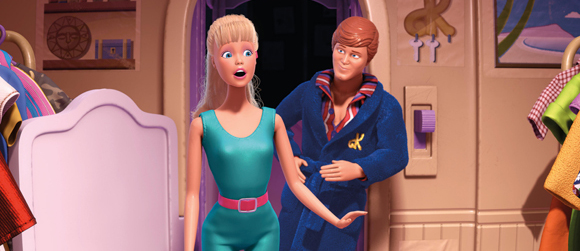Mattel Exec Defends Barbie’s Unrealistic Proportions, Says They Don’t Affect Girls’ Body Image
Things to Do With Your Kids

Barbie is many things: An astronaut. A gymnast. A fashionista. A career woman. “Someone with a realistic body shape” is not one of them. It’s something that’s caused a lot of flak to be sent Mattel’s way over the years, as critics (and studies) claim that the doll’s ultra-tiny waist and, er, ample bosoms cause girls to feel greater pressure to be thin.
According to Kim Culmone, Mattel’s Vice President of Design, that’s all hogwash. Promoting a particular body shape isn’t what Barbie’s about, and the fact that she has that body shape has zero harmful effect on the many millions of girls who’ve played with her over the years.
“Barbie’s body was never designed to be realistic,” said Culmone in an interview with Fast Company. “She was designed for girls to easily dress and undress. And she’s had many bodies over the years, ones that are poseable, ones that are cut for princess cuts, ones that are more realistic.” Another major factor in Barbie’s proportions is that all those hyper-exaggerated curves make it possible to scale her fashions down to doll size: “Because if you’re going to take a fabric that’s made for us, and turn a seam for a cuff or on the body, her body has to be able to accommodate how the clothes will fit her.”
But Ms. Culmone!, you may cry. Practical seamstressing is all well and good, but shouldn’t potential negative effects on the psyches of young girls be regarded as more important? She has an answer for you:
“To me, there isn’t an objective to change the proportion of Barbie currently. And to little girls, they are putting themselves in that doll anyway. You have to remember that girls’ perceptions are so different than grown ups’ perceptions about what real is and what real isn’t, and what the influences are… Girls view the world completely differently than grown-ups do. They don’t come at it with the same angles and baggage and all that stuff that we do. Clearly, the influences for girls on those types of issues, whether it’s body image or anything else, it’s proven, it’s peers, moms, parents, it’s their social circles. When they’re playing, they’re playing. It’s a princess-fairy-fashionista-doctor-astronaut, and that’s all one girl. She’s taking her Corvette to the moon, and her spaceship to the grocery store. That is literally how girls play.”
Well… yeah, peers, parents, and friends affect a girl’s body image. But to pretend that “play” isn’t a part of that, that it exists in some magical bubble where real-world concerns never intrude, seems massively dishonest. Plus a 2006 University of Sussex study straight-up said that being exposed to images of Barbie dolls made girls between the ages of 5 and 8 have “lower body esteem and greater desire for a thinner body shape” than girls exposed to either no dolls or dolls that are US size 16.
But sure. Everyone’s A-OK in Barbieland. Nothing to see here. Move along.
(via: Jezebel)
Are you following The Mary Sue on Twitter, Facebook, Tumblr, Pinterest, & Google +?
Have a tip we should know? tips@themarysue.com